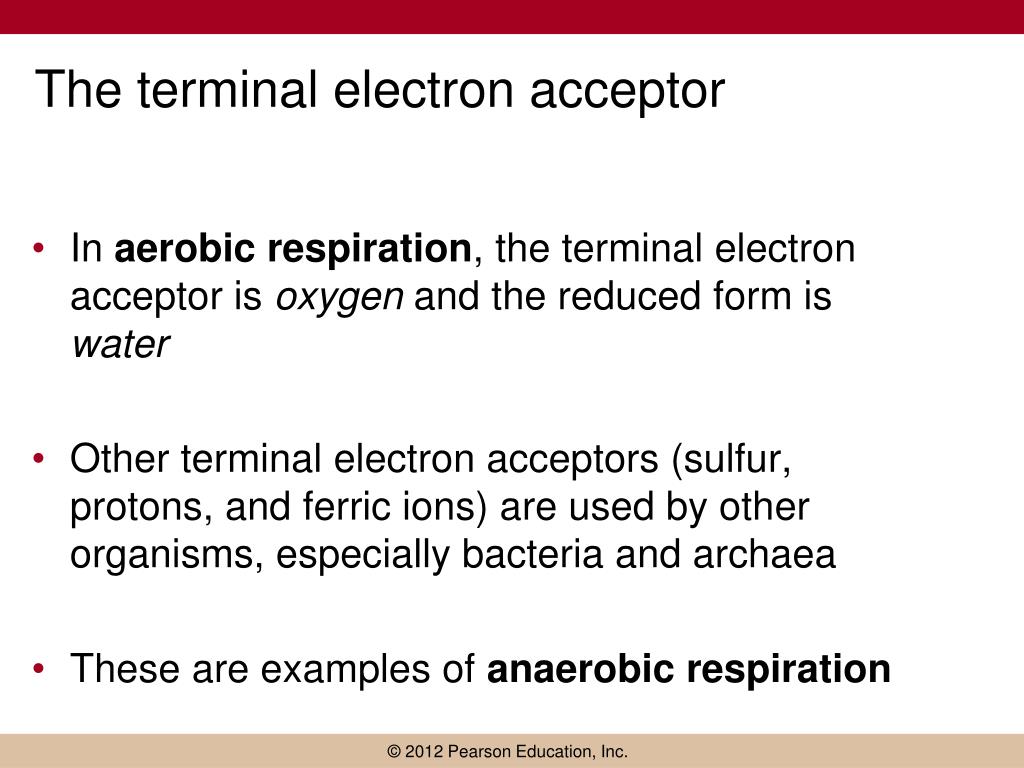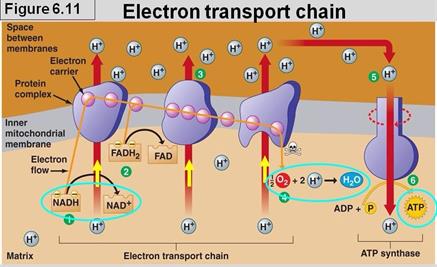
#OXYGEN SERVES AS THE TERMINAL ELECTRON ACCEPTOR IN SERIES#
This chain catalyzes a series of chemical reactions, where each component of the chain is successively reduced, then oxidized, finally being donated to a terminal inorganic electron acceptor. It begins when electrons are transferred from the lithotrophic energy source, or in heterotrophs, from NADH and FADH 2 (made in glycolysis, the transition reaction, and the Krebs cycle), through an electron transport chain.

Cellular respiration occurs in chemotrophs: lithotrophs and heterotrophs. Most ATP, however, is generated during a separate process called oxidative phosphorylation, which occurs during cellular respiration. We have just discussed two pathways in glucose catabolism-glycolysis and the Krebs cycle-that generate ATP by substrate-level phosphorylation. Describe various types of electron acceptors in anaerobic respiration and compare to aerobic respiration.Describe the function and location of ATP synthase in a prokaryotic versus eukaryotic cell.Explain the relationship between chemiosmosis and proton motive force.Compare and contrast the differences between substrate-level and oxidative phosphorylation.Compare and contrast the electron transport system location and function in a prokaryotic cell and a eukaryotic cell.coli, although its spectral properties closely resemble those of cydABX-encoded cytochrome bd. Also, we present the novel data on the electrogenic function of appBCX-encoded cytochrome bd-II, a second bd-type oxidase that had been thought not to contribute to generation of a proton motive force in E.

"WHAT'S NEW" IN THE REVISED ARTICLE: The revised article comprises additional information about subunit composition of cytochrome bd and its role in bacterial resistance to nitrosative and oxidative stresses. It has been proposed that the bo₃ oxidase can have two ubiquinone-binding sites with different affinities. coli membrane contains three types of quinones that all have an octaprenyl side chain (C₄₀). It also presents a discussion on the genetics and the prosthetic groups of cytochrome bo₃ and cytochrome bd. This review compares the effects of different inhibitors on the respiratory activities of cytochrome bo₃ and cytochrome bd in E.

Terminal oxidases of aerobic respiratory chains of bacteria, which use O₂ as the final electron acceptor, can oxidize one of two alternative electron donors, either cytochrome c or quinol. A transfer of electrons from quinol to O₂ is served by two major oxidoreductases (oxidases), cytochrome bo₃ encoded by cyoABCDE and cytochrome bd encoded by cydABX. Under aerobic growth conditions, the terminal electron acceptor is molecular oxygen. Then electrons from reduced quinones (quinols) are transferred by terminal reductases to different electron acceptors. Substrate-specific dehydrogenases transfer reducing equivalents from various donor substrates (NADH, succinate, glycerophosphate, formate, hydrogen, pyruvate, and lactate) to a quinone pool (menaquinone, ubiquinone, and dimethylmenoquinone). In general, the bacterial respiratory chain is composed of dehydrogenases, a quinone pool, and reductases. Like most bacteria, Escherichia coli has a flexible and branched respiratory chain that enables the prokaryote to live under a variety of environmental conditions, from highly aerobic to completely anaerobic.


 0 kommentar(er)
0 kommentar(er)
